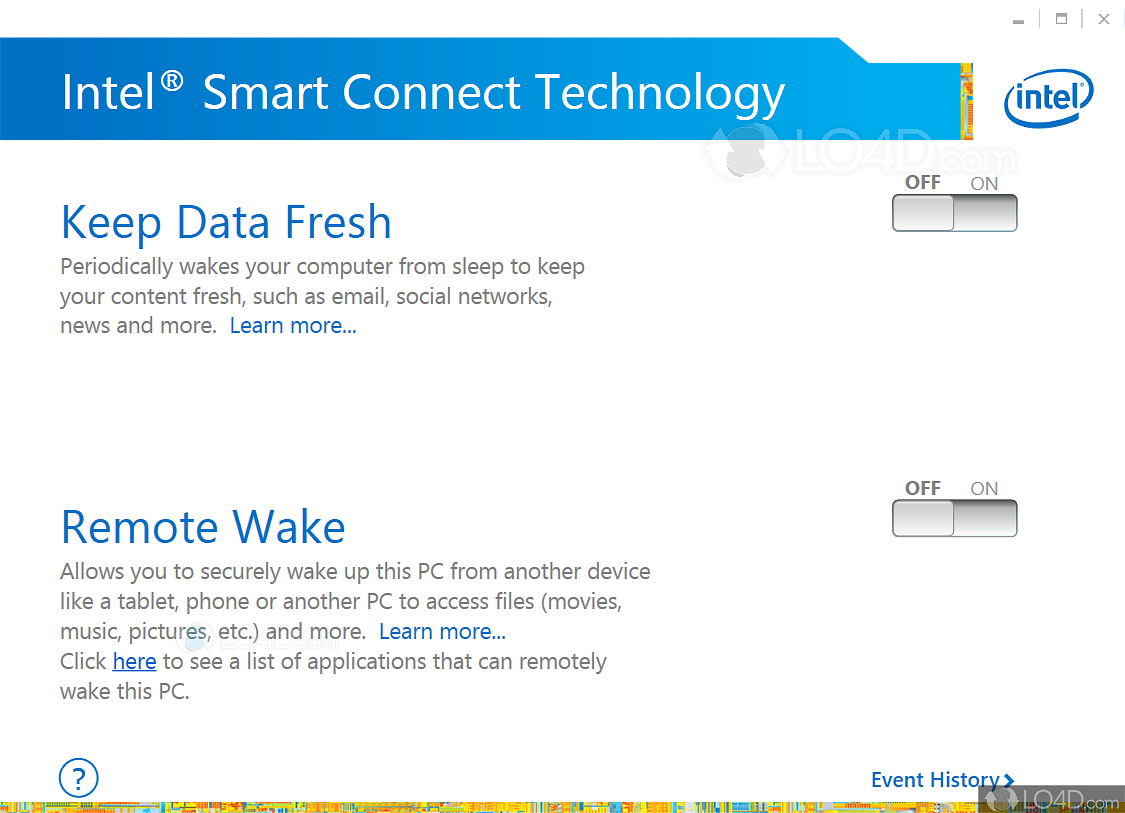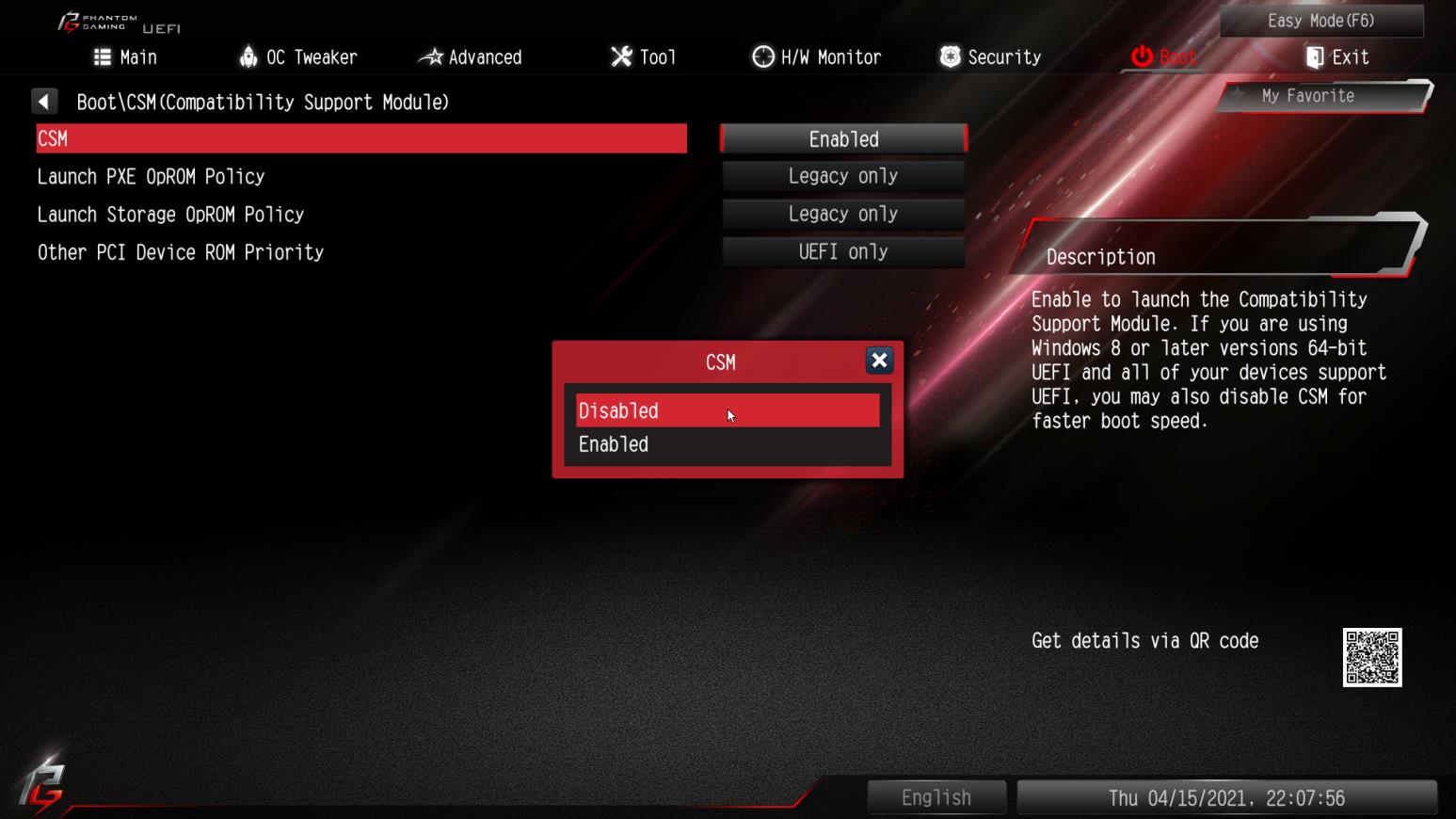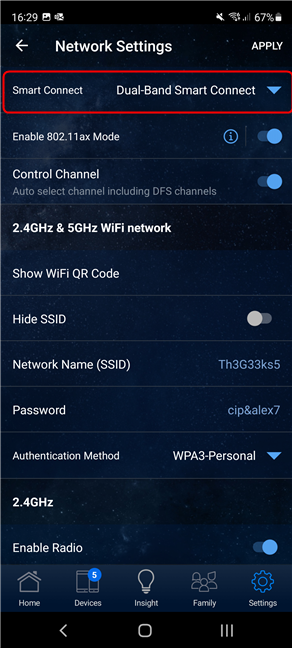
- INTEL SMART CONNECT TECHNOLOGY ERROR WINDOWS 8 HOW TO
- INTEL SMART CONNECT TECHNOLOGY ERROR WINDOWS 8 DRIVER
- INTEL SMART CONNECT TECHNOLOGY ERROR WINDOWS 8 SOFTWARE
- INTEL SMART CONNECT TECHNOLOGY ERROR WINDOWS 8 PC
- INTEL SMART CONNECT TECHNOLOGY ERROR WINDOWS 8 OFFLINE
INTEL SMART CONNECT TECHNOLOGY ERROR WINDOWS 8 OFFLINE
Self-test execution status: ( 16) The self-test routine was aborted byĬapabilities: (0x7f) SMART execute Offline immediate.Īuto Offline data collection on/off support. Was aborted by an interrupting command from host. Offline data collection status: (0x05) Offline data collection activity Smartctl 6.6 r4324 (local build)Ĭopyright (C) 2002-16, Bruce Allen, Christian Franke, = START OF READ SMART DATA SECTION =
INTEL SMART CONNECT TECHNOLOGY ERROR WINDOWS 8 HOW TO
How to fix this problem? Thanks.ĭrive information provided by smartctl: $ sudo smartctl -cA /dev/sdb
INTEL SMART CONNECT TECHNOLOGY ERROR WINDOWS 8 DRIVER
In contrast, my other Intel driver functioned properly on this value, and the precision is down to milliseconds. I found that the SMART attribute 0x09 "Power-on hours" stick to zero and never increased. If you need virtualization, it's well worth testing.I have an Intel 535 480GB drive (SSDSC2BW480H6), with firmware RG21. But based on my experience with Windows Server and now with Windows 8, Hyper-V is in a completely different league.
INTEL SMART CONNECT TECHNOLOGY ERROR WINDOWS 8 SOFTWARE
Of course, you can always use third-party virtualization software if you prefer, and indeed I often recommended it over the much more limited Windows Virtual PC. Thankfully, this compatibility issue is much more straightforward, and no secret decoder ring is required. In that case, the issue was far trickier, with even some then-current high-end CPUs not supporting the required virtualization technology. If your memory is sharp enough, you might recall a similar hardware compatibility issue that arose during the development of Windows 7.

Core2 and older processors (beginning with Q, E, and so on) don't include this support. Just look at the CPU name: if it begins with i (i3, i5, i7), it supports SLAT. Or you can look up the CPU to check whether it supports the required feature.ĪMD has put together a comprehensive list here.Īmong Intel processors, any model based on the Nehalem architecture supports SLAT. The asterisk to the right of EPT means this CPU does indeed pass the test. Open a Command window as an Administrator and run the utility with the –v switch to see the output shown here. If you haven't yet installed Windows 8, you can use Coreinfo (part of Mark Russinovich's essential Sysinternals collection) to check. If your CPU doesn’t support Hyper-V, the Hyper-V Core check box will be grayed-out and unavailable, and you’ll see the following error message if you move the mouse pointer over that item: In the Turn Windows features on or off dialog box, select the Hyper-V box and then click or tap OK. If you've already installed the Windows 8 Developer Preview, you can find out by trying to enable Hyper-V (the feature is disabled by default). Here's how you can find out whether your CPU supports this feature. The AMD equivalents are Rapid Virtualization Indexing (RVI) and nested page tables (NPT), respectively. Some older Intel documentation refers to this feature as extended page tables (EPT). So what's the catch? Hyper-V runs only on a 64-bit version of Windows 8, and only if the host machine is equipped with a 64-bit processor that supports a feature called Second Level Address Translation (SLAT). I used VMs, for example, to document the setup process for Windows 8 for my new book, Ed Bott's Windows 8 Head Start without this capability, I would have no way to capture screen shots showing how the installation and repair features work. At the moment, for example, I have Windows Server 2008 R2, Windows 7 Enterprise, and a second instance of Windows 8 running in isolated virtual machines on a Windows 8 host.
INTEL SMART CONNECT TECHNOLOGY ERROR WINDOWS 8 PC
On a test PC running the Windows 8 Developer Preview, I've been using Hyper-V extensively, and it's been rock-solid. The average consumer will never need it, but it’s a godsend for IT professionals, developers, security researchers, and enthusiasts.


Hyper-V integrates this capability directly into the operating system, using technology that has proven itself in the server versions of Windows for more than three years. Windows 7 offered similar capabilities through the use of an add-on program called Windows Virtual PC. I'm talking about Hyper-V, the virtualization technology that is being built into a desktop version of Windows for the first time. But if you go that route, you might find that you're unable to use one of the most significant new features in Windows 8. A two-year-old PC seems like a perfect candidate for a test bed-after all, the system requirements for Windows 8 are unchanged from those of Windows 7. You might have your eye on a surplus PC as a Windows 8 test bed. Ukrainian developers share stories from the war zoneĪre you planning to test Windows 8 when the beta release arrives in February? If so, you'd better start thinking about your hardware now. Linux distros for beginners: You can do this! Got questions about crypto? Ask the Coachįor Mom: The best flower delivery services How ransomware attacks threaten our food supply


 0 kommentar(er)
0 kommentar(er)
